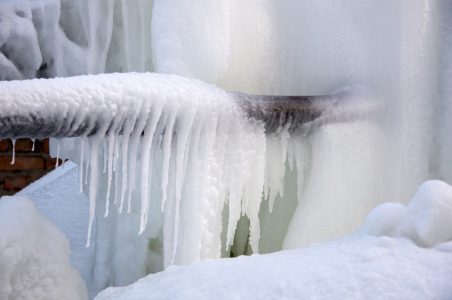Crucial Advice to Protect Against Frozen Plumbing in Winter
Crucial Advice to Protect Against Frozen Plumbing in Winter
Blog Article
The author is making a number of good points regarding How to prepare your home plumbing for winter weather in general in the content on the next paragraphs.

Winter can ruin your pipes, especially by freezing pipelines. Right here's exactly how to prevent it from happening and what to do if it does.
Intro
As temperature levels decrease, the danger of frozen pipelines boosts, potentially leading to pricey repair work and water damages. Comprehending exactly how to avoid icy pipes is crucial for homeowners in chilly climates.
Understanding Frozen Pipelines
What causes pipelines to ice up?
Pipes freeze when subjected to temperature levels below 32 ° F (0 ° C) for prolonged durations. As water inside the pipelines freezes, it expands, taxing the pipeline wall surfaces and possibly causing them to rupture.
Threats and damages
Frozen pipelines can lead to water system disturbances, residential property damages, and pricey repair work. Burst pipes can flood homes and trigger substantial architectural damages.
Indications of Frozen Water Lines
Recognizing icy pipes early can avoid them from rupturing.
How to identify icy pipelines
Try to find reduced water flow from faucets, uncommon odors or noises from pipelines, and noticeable frost on exposed pipes.
Avoidance Tips
Protecting vulnerable pipelines
Wrap pipelines in insulation sleeves or utilize heat tape to shield them from freezing temperature levels. Focus on pipelines in unheated or exterior areas of the home.
Heating strategies
Maintain indoor areas properly heated, specifically areas with plumbing. Open up cupboard doors to allow cozy air to distribute around pipelines under sinks.
Shielding Outdoor Pipes
Yard hose pipes and exterior faucets
Detach and drain pipes yard hoses before wintertime. Mount frost-proof faucets or cover exterior faucets with insulated caps.
What to Do If Your Pipes Freeze
Immediate actions to take
If you think frozen pipes, keep faucets open to ease pressure as the ice melts. Use a hairdryer or towels soaked in warm water to thaw pipelines gradually.
Long-Term Solutions
Structural adjustments
Consider rerouting pipelines far from exterior walls or unheated locations. Add extra insulation to attic rooms, cellars, and crawl spaces.
Upgrading insulation
Buy top notch insulation for pipes, attic rooms, and walls. Proper insulation helps preserve consistent temperature levels and decreases the threat of frozen pipelines.
Conclusion
Protecting against frozen pipelines requires positive measures and quick actions. By understanding the reasons, indications, and preventive measures, house owners can shield their pipes throughout winter.
5 Ways to Prevent Frozen Pipes
Drain Outdoor Faucets and Disconnect Hoses
First, close the shut-off valve that controls the flow of water in the pipe to your outdoor faucet. Then, head outside to disconnect and drain your hose and open the outdoor faucet to allow the water to completely drain out of the line. Turn off the faucet when done. Finally, head back to the shut-off valve and drain the remaining water inside the pipe into a bucket or container. Additionally, if you have a home irrigation system, you should consider hiring an expert to clear the system of water each year.
Insulate Pipes
One of the best and most cost-effective methods for preventing frozen water pipes is to wrap your pipes with insulation. This is especially important for areas in your home that aren’t exposed to heat, such as an attic. We suggest using foam sleeves, which can typically be found at your local hardware store.
Keep Heat Running at 65
Your pipes are located inside your walls, and the temperature there is much colder than the rest of the house. To prevent your pipes from freezing, The Insurance Information Institute suggests that you keep your home heated to at least 65 degrees, even when traveling. You may want to invest in smart devices that can keep an eye on the temperature in your home while you’re away.
Leave Water Dripping
Moving water — even a small trickle — can prevent ice from forming inside your pipes. When freezing temps are imminent, start a drip of water from all faucets that serve exposed pipes. Leaving a few faucets running will also help relieve pressure inside the pipes and help prevent a rupture if the water inside freezes.
Open Cupboard Doors
Warm your kitchen and bathroom pipes by opening cupboards and vanities. You should also leave your interior doors ajar to help warm air circulate evenly throughout your home.

Do you enjoy reading up on 6 Ways to Prevent Frozen Pipes? Make feedback directly below. We will be delighted to know your ideas about this blog entry. In hopes that you come back again later on. Don't hesitate to take a moment to share this blog if you appreciated it. I love your readership.
Call Today Report this page